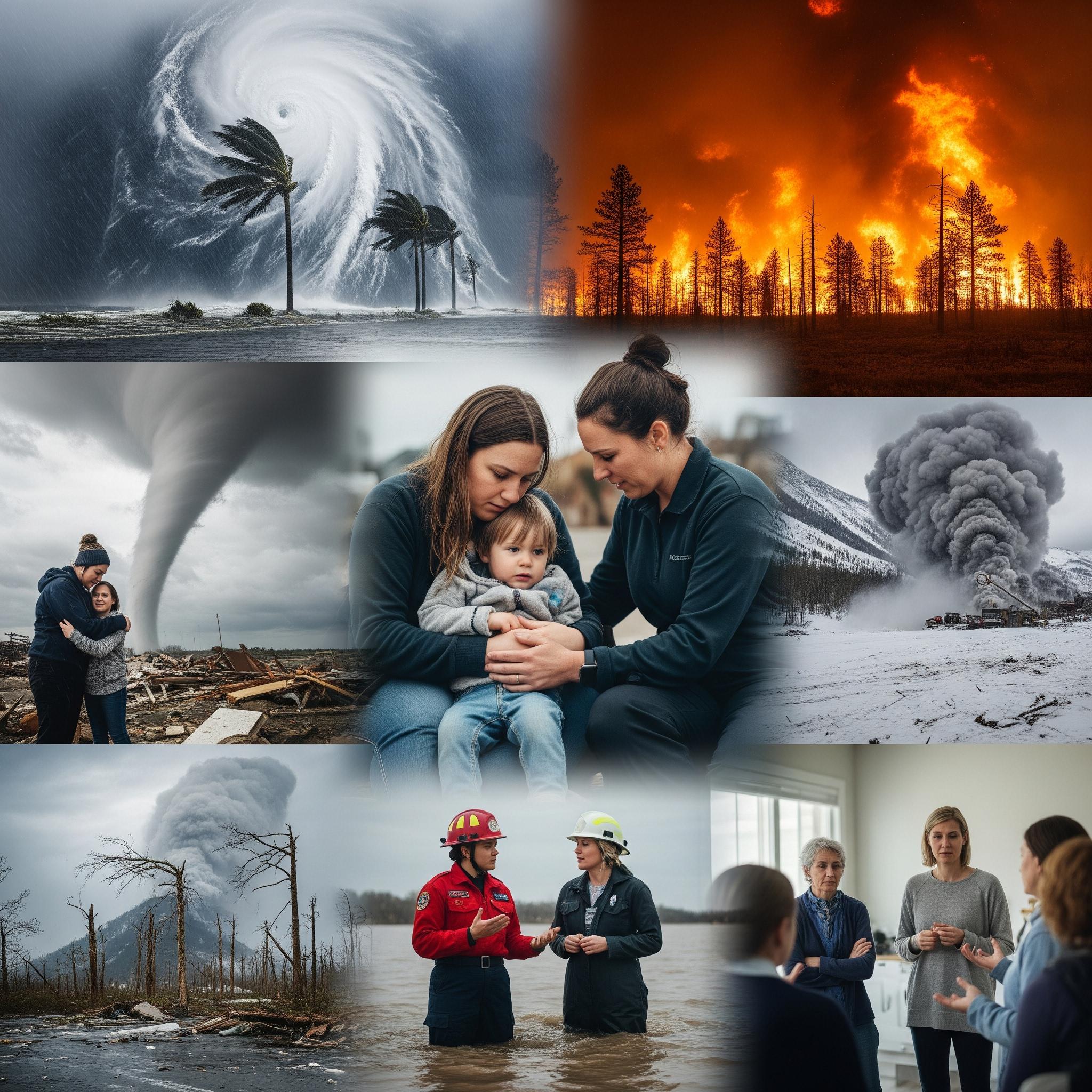Website designed with the B12 website builder. Create your own website today.
Start for free
The earth is speaking a new language – one of increasingly frequent and severe weather events. While we often focus on the immediate devastation, there's a quieter, yet equally profound, aftermath: the psychological toll. As seen with the recent, horrific flash floods in Central Texas, where the Guadalupe River surged 26 feet in just 45 minutes, killing 109 people (including 27 children at Camp Mystic), the physical damage is just one part of the story. The long shadow of trauma, particularly Post-Traumatic Stress Disorder (PTSD), touches survivors, first responders, and entire communities.
Beyond the Headlines: The Invisible Wounds of Weather Trauma
We typically associate PTSD with combat or violent assault. However, mental health experts are increasingly warning that climate disasters, especially those that strike without warning, can trigger similar, deeply traumatic effects. This is particularly true for children.
Imagine the chaos: "Sudden loss, sirens, screams, and separation from caregivers—these sensory and emotional triggers can lodge deep into the nervous system," explains Dr. Michelle Reyes, a trauma-informed psychologist working with flood survivors. "Children especially don’t have the coping frameworks adults do, and the damage can manifest later in life.”
The symptoms of weather-induced PTSD mirror those of other forms of trauma:
The Unseen Burden: First Responders
While we praise their heroism, the emotional load on first responders is often overlooked. In Kerr County, rescue workers faced round-the-clock efforts to pull people from flooded buildings and locate missing children. Many have reported sleep loss, intrusive memories, and agonizing guilt over those they couldn’t save. It’s crucial that we offer immediate and accessible mental health support to these brave individuals, who may be hesitant to ask for help.
A Systemic Issue: The Cruelty of No Warning
A significant factor amplifying the trauma in the Central Texas floods was the chilling lack of warning. Mayor Tammy Caldwell tearfully conveyed to CNN, “We didn’t even have a warning.” Kerr County lacks a robust flood siren system, and national alerts frequently arrive too late or during the night. This region, known as "Flash Flood Alley," is one of North America's most flood-prone areas, making effective warning systems not just a convenience, but a critical component of mental and physical safety.
Moving Forward: Healing Our Communities
Survivors of environmental disasters need more than just financial aid and cleanup crews; they need comprehensive, trauma-informed care. Here’s what communities can, and must, do:
At a policy level, investment in robust warning infrastructure, proactive emergency planning, and comprehensive climate resilience strategies is no longer optional, especially in high-risk areas.
Beyond the Water: Anchoring Survivors
As natural disasters become more frequent and intense, the emotional aftershocks – the fear, grief, and trauma – are just as real as the rising waters. Recognizing PTSD early and responding with compassion and clinical care can be the lifeline that keeps survivors anchored as they rebuild their lives and communities. Let's ensure that when the noise of the storm fades, the hidden echoes of trauma are not ignored, but actively healed.